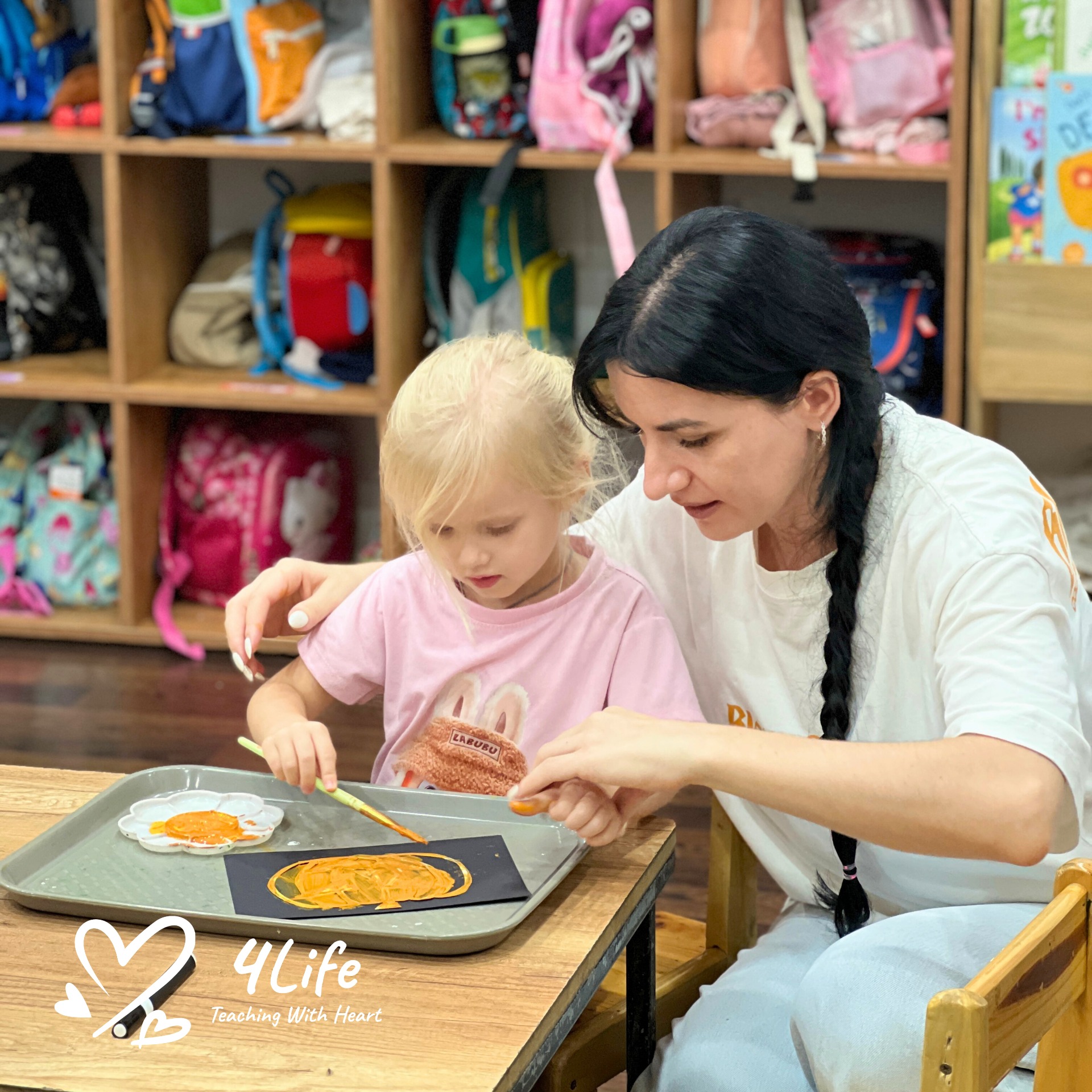Taking control of the television is an essential part of helping children build healthy habits, balanced routines, and strong values. Let’s find out with 4Life Education how to shift from passive viewing to intentional choices that support your child’s development – while still enjoying the best that screen time has to offer. It starts at home.
Why television needs to be managed?
In today’s world, television has become one of the most powerful influences on young children. Where once their understanding of the world came from the home, school, religious organizations, and friends, TV has now entered as a dominant “fifth culture.” The challenge? Most parents are not fully aware of what their children are watching, how much time they’re spending in front of screens, or how it shapes their minds.

How to Taking Control of the Television kids?
Television is not inherently bad. Some programs offer rich educational content, storytelling, and creativity. But without boundaries, TV can easily turn into a source of passive consumption, overexposure to violence or inappropriate messages, and even emotional dependency. Taking control of the television is not about eliminating screen time – it’s about guiding it.
The dangers of passive parenting around TV
One of the biggest concerns in many households is passive parenting – allowing the television to become a constant companion for children simply because it’s convenient. It’s easy to understand why. Parents are busy, and TV offers a quick way to keep kids quiet or occupied. However, there are real consequences to this habit.
Young children are highly impressionable. When they watch television unsupervised or without limits, they absorb far more than we realize. They see problem-solving modeled through violence, relationships portrayed without respect, and materialism promoted through flashy ads. In one year, a child may witness thousands of acts of aggression, including fights, explosions, and even death – all without real-world consequences or guidance.

The dangers of passive parenting around TV
Even more concerning is how television affects brain activity. Children don’t engage their imagination or critical thinking when watching. The colorful visuals and rapid scene changes hypnotize them into a trance-like state. Unlike reading or play, television doesn’t ask anything of them. They become passive receivers rather than active participants.
Setting ground rules for healthy viewing
Taking control of the television begins with clear family ground rules. This means deciding in advance how much TV your child can watch, when they can watch it, and what kind of content is acceptable.
Here are a few important steps to create effective TV guidelines:
– Create a consistent schedule: Decide how many hours per day or week your child can watch TV, and stick to it. Some families allow an hour per day, while others choose specific days for TV and other days for reading or outdoor play.
– Offer guided choices: Give children the freedom to choose their programs within boundaries you’ve set. For example: “You can pick three shows from this list. Which ones do you want to watch today?”

Setting ground rules for healthy viewing
– Choose quality content: Select shows that align with your family’s values. Prioritize programs with educational, emotional, or cultural benefits. Avoid shows that rely on violence, disrespect, or over-the-top humor to entertain.
– Watch together: Especially with younger children, co-viewing is an opportunity to talk about what they see. If a show includes difficult or confusing content, use it as a springboard for conversation.
– Turn it off during meals and routines: TV should not be background noise during dinner or bedtime. Establish clear “screen-free” times where the focus is on connection, conversation, or rest.
Encouraging active alternatives
One of the main reasons children gravitate to television is boredom. But boredom is not a bad thing – it’s a gateway to creativity. When children aren’t constantly entertained, they learn to invent games, build forts, explore nature, or get lost in a book. Taking control of the television gives them back that time.
Encourage active alternatives to TV such as:
– Art and crafts.
– Reading together.
– Music and dancing.
– Outdoor play.
– Board games or puzzles.
– Helping in the kitchen.
– Quiet time with audiobooks.
You can even create a “boredom box” filled with activities that your child can turn to when they feel like watching TV but it’s not time yet.
Teaching media literacy early
Even young children can begin learning how to think critically about what they watch. Media literacy means understanding that not everything on TV reflects real life. It’s about asking questions like:

Teaching media literacy early
– What happened in this show?
– Was that a good way to solve a problem?
– How do the characters treat each other?
– Why do you think they showed that commercial?
These kinds of discussions help children grow into thoughtful viewers who don’t just absorb messages blindly. They also learn to make informed choices, understand marketing tactics, and develop their own values rather than adopting what they see on screen.
Handling resistance with empathy
It’s natural for children to resist limits – especially if they’re used to watching TV whenever they want. Transitioning to structured screen time may lead to frustration at first, but it’s worth staying calm and consistent.
Here are some tips for handling pushback:
– Explain your reasons: Children are more likely to accept rules when they understand the “why.” Talk to them about health, imagination, rest, and fairness.
– Offer empathy and alternatives: Acknowledge their feelings (“I know it’s hard to turn off your favorite show”) while providing something else to do.
– Use timers and transitions: Let children know ahead of time when TV time is ending. Setting a visual timer or giving a five-minute warning helps reduce surprise or tantrums.
– Be a role model: Children follow what they see. Make sure your own screen habits reflect what you want them to learn.
Managing commercial content
Another area to consider is the type of television your child is watching – especially when it comes to commercial programming. Many children’s shows are embedded with advertising that promotes toys, sugary foods, or gadgets. This kind of content can increase materialism, create unrealistic expectations, and pressure families into unnecessary purchases.

Managing commercial content
Consider the following strategies:
– Choose non-commercial platforms or subscription services without ads.
– Pre-record shows to skip through commercial breaks.
– Talk to your child about advertising and how it works.
– Limit exposure by watching fewer shows that rely on heavy branding.
By managing this content early, you help your child build resistance to external pressure and consumer culture.
Involving the whole family
Taking control of the television should not fall only on one parent’s shoulders. Make screen time a family conversation. Involve children in creating the rules so they feel invested in the outcome. Talk regularly about what they watch, what they enjoy, and what they learn.

Involving the whole family
Create a “media agreement” together – a fun family contract that outlines your values and expectations around screens. Include rewards for responsible use, and consequences for breaking the rules. The more collaborative the process, the more likely everyone will follow through.
Finding the right balance
Ultimately, television doesn’t have to be the enemy. The goal is not to remove screens entirely but to make sure they serve your family – not control it. With a balance of structure, choice, and communication, you can make TV a positive part of your child’s life.
Try building screen time into your daily rhythm in a way that works for your lifestyle. Some families enjoy “Family Movie Night” once a week. Others make it a special treat after outdoor play or reading. Find what feels right for you.

Taking Control of the Television
Remember, the key is intention. When you’re in control of what your child watches, how often, and why – you’re teaching them to be thoughtful, empowered, and balanced.
Taking control of the television means more than managing screen time – it means reclaiming your child’s emotional, creative, and intellectual growth. When families set healthy limits, choose thoughtful content, and engage in meaningful discussions, television becomes a tool for learning rather than a substitute for connection. By stepping into this leadership role, you create a home environment where screens support your values, not replace them.








0 Comments